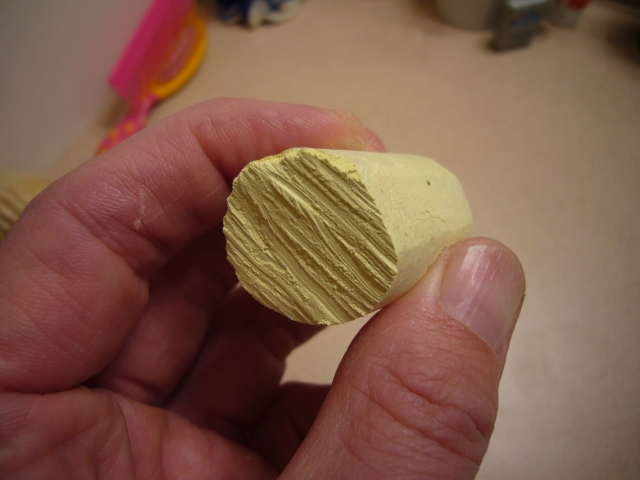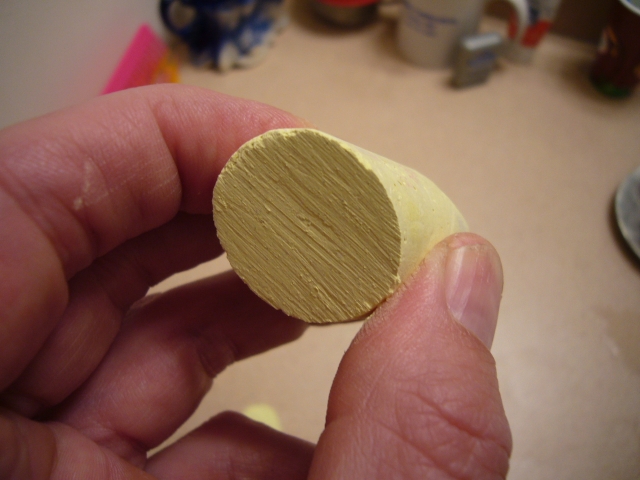Results 11 to 15 of 15
-
02-26-2014, 03:01 PM #11Senior Member

- Join Date
- Jul 2013
- Posts
- 444
Thanked: 18
-
02-26-2014, 03:03 PM #12Senior Member

- Join Date
- Jul 2013
- Posts
- 444
Thanked: 18
I'm thinking I'll have to pick up the chosera. Many, many years ago I had a Shapton 1k. I got rid of it as it was too slow and dished to quickly. I found it faster to go from the dmt green to the Shapton 5k. Maybe the chosera is the 1k waterstone I've been seeking.
-
02-26-2014, 11:03 PM #13Senior Member



- Join Date
- Apr 2012
- Location
- Diamond Bar, CA
- Posts
- 6,553
Thanked: 3215
As said, do what the razor needs. The term bevel stetting is use by us to mean make the bevels flat and even so they meet in a straight edge. The edge is sharp. It is the base point from which you build an edge.
But if your razor has already been honed and the bevels are flat and even and meeting but not completely, lacking sharpness, a regression all the way to 1K may not be needed and in fact may result in a poorer edge. If the bevels are in good condition going to an 8 or 4k and slowly coxing the bevels to meet at the higher grit with much smaller stria, the edge will be much straighter (finer stria) and stronger less likely to microchip, especially with a novice honer who will most likely use too much pressure and spend too much time on the low grit hone.
Before diving in with a low grit stone, ink the bevels and do 2-3 laps with a 12 or 8K stone, look at the edge straight down with magnification and strong light. Look for any light reflecting back at you from the edge (where bevels are not meeting) and if ink is removed from the bevels all the way to the edge. Then decide the course of action depending on the results.
Bevel setting an eBay special and a razor that is need of refreshing are two different things.
While any diamond plate or low grit stone will remove metal quickly you may pay for that speed in the end. Aggressive diamonds and or pressure will make a frail edge as can any 1k and pressure. This is what Onimaru is talking about and I believe often over looked, the source of much frustration and countless honing threads by novice honers.
Even with a quality 1K 10 + light polishing laps after the bevel is set, to begin the polishing of the bevel and edge reducing stria land height may save you many laps further down the road.
Here is a visual demonstration of Pressure and its effects, same abrasive media, same subject, different amounts of pressure. If this was a razor, which would produce a finer, stronger edge?


-
The Following User Says Thank You to Euclid440 For This Useful Post:
onimaru55 (02-27-2014)
-
02-26-2014, 11:17 PM #14illegitimum non carborundum



- Join Date
- Jan 2008
- Location
- Rochester, MN
- Posts
- 11,552
- Blog Entries
- 1
Thanked: 3795
That is an excellent demonstration. These photos somehow need to go into a Wiki, or a Sticky, or something that makes it available for all honers, beginners or not, to see.
-
02-27-2014, 04:58 AM #15Senior Member



- Join Date
- Apr 2012
- Location
- Diamond Bar, CA
- Posts
- 6,553
Thanked: 3215
Yes, very visual, it is from an old honing post here, I forget who posted it.
The more I think about refresh honing, the more I think we too often, too quickly turn to a full 1k bevel set.
I also notice many fine old, very old razors especially European, with very little if any spine hone wear.
Which lead me to believe, natural medium/high grit one stone honing with slurry, e.g. Coticule, Slates, and Jnats were used to slowly build and maintain and edge. That and stropping… maybe there is something to learn from that.


 25Likes
25Likes LinkBack URL
LinkBack URL About LinkBacks
About LinkBacks







 Reply With Quote
Reply With Quote